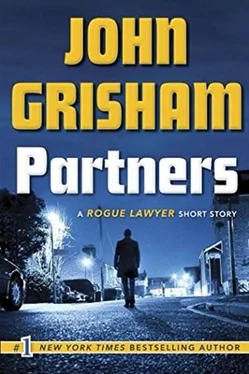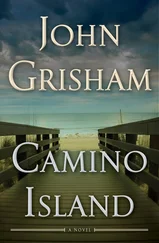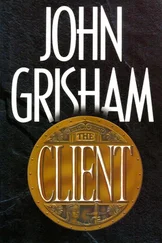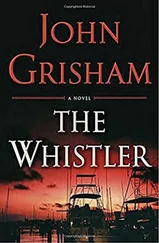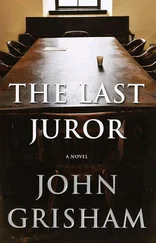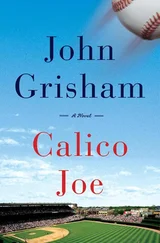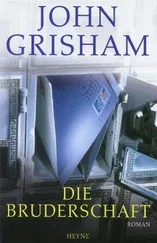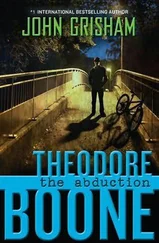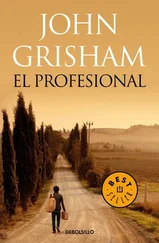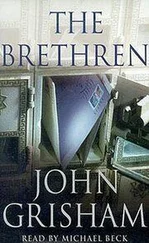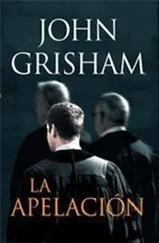Or, he could neutralize his little China doll. He was crazy about the girl and obsessed with her. He knew she’d been seventeen and didn’t care. That was part of the package, part of the thrill. It wasn’t as though he’d been robbing her of her innocence. Why would she squeal on him and ruin his life?
The third option was the worst. Do nothing and go to trial. Tell his story with as much sincerity as possible. Brace for the shit storm when she took the stand. Then deny, deny, deny. What if the jury believed her and not him? What if the cop killer walked?
He left the bar and drove through Little Angola. Though he was a cop with a badge and a gun, he was still a white guy in jeans, and strolling through the neighborhoods was not a good idea. The Flea Market was somewhat safe if he were buying drugs, and there was a section of Crump Street where the white guys picked up hookers while the pimps kept things safe. Other than that, though, white folks stayed out of Little Angola after dark.
Knoxel parked beside a church and finished a can of beer. He used a burner to call Maynard, her pimp, but there was no answer. He left the church and weaved nonchalantly through the streets but saw nothing. He stopped at a convenience store with iron bars across the windows and bought another beer. When he finished it, he parked on the street, took out his pistol, clicked off the safety, stuck it in the right rear pocket of his jeans, and ducked into an alley behind the flophouse.
He couldn’t be seen, couldn’t leave behind witnesses. He would neutralize China, then Maynard, and if he could score clean kills and disappear into the darkness all would be well. His marriage, career, reputation-all intact.
Dahl said they couldn’t use the affidavit in court. If Jane Doe failed to show, the affidavit was inadmissible. Something to do with Mancini’s right to cross-examine the witness.
Knoxel heard voices and hid behind a wooden stairway. The gun was out of his pocket, in his hand, and all he had to do was yell “Police!” and everyone within fifty yards would scatter. He felt safe, as always, but he could not run the risk of being seen. He peeked into a ground-floor window of the flophouse and saw no one. China usually worked in a room on the second floor. Silently, he opened the door and eased inside. From this point on, he had no choice but to shoot anyone who saw him.
“Four Killed in Botched Robbery of Brothel.” These days, such a headline out of Little Angola might not even make the front page.
The dim light was suddenly gone; the room was black. Knoxel saw nothing but lifted the gun anyway. As he tried to focus, a claw hammer landed at the base of his skull.
The trial of Thomas Ray Cardell was delayed for a month as both sides inventoried their missing witnesses. Judge Schofield ran out of patience and set a date. He said, off the record, that it would be in the best interests of all involved if they got the trial completed before anyone else disappeared.
Jacoby was still hiding in L.A. There was no sign of Jane Doe. And, apparently, she wouldn’t be needed anyway because there was no sign of Keith Knoxel either. The bartender said Knoxel had left the bar around 9:00 p.m., after six beers. A convenience store video captured him buying a sixteen-ounce can of Schlitz at 9:55. He didn’t appear to be drunk but the clerk said he was red-eyed and shaky. His car was found where he left it, with three more empty cans on the passenger seat.
The police threw everything they had at the disappearance but found nothing. China was in Detroit hiding with relatives. Maynard had taken a break and was down in Memphis visiting his mother. Solid alibis everywhere. The flophouse was combed for days and yielded nothing.
The Flea Market was shut down after dark, seriously disrupting the flow of narcotics. In a show of force, the police basically occupied the streets of Little Angola, arresting dozens for every minor offense in the book. Not surprisingly, tensions rose and there were skirmishes.
Against this backdrop, two hundred prospective jurors appeared as summoned to the Old Courthouse on a rainy Monday morning. Disregarding the weather, a boisterous crowd of protesters, almost all black, marched and made noise on the sidewalks around the building. Their banners demanded justice, freedom for Tee Ray, an end to the police state, and so on.
Because of his seniority, the Honorable Owen Schofield held court on the second floor of the Old Courthouse, in the grandest room of all. It had rows of cushioned seating for the spectators and soaring portraits of dead judges, all serious white men. It had thick marble columns behind His Honor’s bench and an elegant balcony with a hundred padded chairs. And on this day it also had an entire squad of uniformed bailiffs directing traffic. There was some jostling over seating. The reporters, typically, got in the way and demanded access. Two were shown the door. Schofield did not allow cameras in his courtroom, and he would have banned all manner of press if he’d been able. It took the bailiffs two hours to seat the pool of jurors, inspect their paperwork, and keep the reporters in their corner.
While this was going on, Judge Schofield met with the lawyers in chambers to iron out their current difficulties. Max Mancini was demanding another continuance. More time was needed to find Keith Knoxel. The search was only a month old, and until there was a body, dead or alive, it simply wasn’t fair to proceed without the State’s star witness. The FBI was involved. There may have been a sighting in Canada. His wife was clinging to hope.
Nonsense, argued Sebastian Rudd. He’s dead and they’ll never find his body. There’s not one speck of evidence indicating Knoxel ran away; therefore, he got snatched by some nasty types while poking around Little Angola, no doubt looking for his dear Jane Doe, and they probably slit his throat and tossed him in the river. With concrete boots.
The ace was up Sebastian’s sleeve, not Mancini’s. The defendant was entitled to a speedy trial, so speedy that if he so chose he could force the State to pick a jury 120 days after indictment. That was twelve months ago, and Sebastian had agreed to a few continuances because he needed the extra time. Now, though, he was ready and he wanted a trial.
For a while Sebastian had toyed with the idea of agreeing with Mancini. There was a strategic reason for wanting Knoxel on the stand. If Sebastian could humiliate him, expose his lies and infidelities, he could crush the State’s case. Ripping Knoxel in front of the jury, and for the benefit of the front page, would be an intense, dramatic moment, and Sebastian hated to miss it. In the end, though, he convinced himself that his client’s defense was far better off with Knoxel out of the picture.
Sebastian suspected there was yet another factor in play, though it was not mentioned. When he read the affidavits of John and Jane Doe, Judge Schofield was skeptical of Knoxel’s version of events. It seemed unlikely that the two witnesses, one a hooker and one a crackhead, could tell the same basic story. In his thirty years on the bench, Schofield had heard plenty of false testimony by the police and was wary of them on the witness stand. He found Knoxel’s narrative a bit too convenient, too pat. Buck Lester fired four shots, then somehow dropped his gun, giving a wounded Thomas Cardell a split second to shoot him in the head.
Schofield’s doubts led to his ruling that Jane and John could testify.
The lawyers argued and the judge listened but did not change his plans. No more continuances.
Jury selection took seven days, and when number twelve was finally sworn in, the box was filled with eight whites, three blacks, and one Hispanic; six men, six women; average age was forty-eight.
Читать дальше
